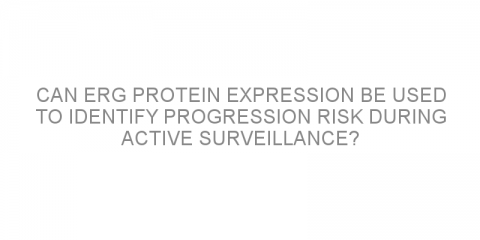In a nutshell The authors compared scar satisfaction in prostate cancer patients who underwent different surgical procedures. Some background Surgical removal of prostate gland is a common treatment in prostate cancer. There can be different types of surgical techniques. Laparascopic surgery (standard surgery) involves several small...
Read MoreCurrent PSA level-Between 1 to 4 Posts on Medivizor
Looking for prostate cancer patients to evaluate the benefits of hypo-fractionated radiation therapy
In a nutshell This phase III trial aims to determine the effects of hypo-fractionated radiation compared to standard radiation therapy. The main outcome to be investigated is whether hypo-fractionated radiation has similar or better results when compared to standard radiation. This trial is recruiting in in Illinois, Oklahoma and Virginia, in the...
Read MoreActive surveillance – the effect on erectile function
In a nutshell The authors aimed to determine whether taking repeated tissue samples during active surveillance can reduce erectile functioning in prostate cancer patients. Some background Active surveillance is a form of prostate cancer management that involves actively monitoring tumor growth and development in a patient without...
Read MoreNew, upcoming treatment for hormone-resistant prostate cancer
In a nutshell The authors aimed to determine the effect of orteronel in patients resistant to hormone treatment. Some background Hormone therapy is commonly used in prostate cancer treatment and involves targeting the male sex hormones active in prostate cancer, such as testosterone. In some cases patients receiving hormone therapy may become...
Read MoreHealth factors used to predict patient outcome following radiation therapy in prostate cancer
In a nutshell The authors aimed to determine if a new risk classification system could help determine treatment and outcome in individuals with intermediate-risk prostate cancer. Some background External-beam radiation therapy (EBRT) is a form of treatment that involves the application of an external radiation source focused at the site of...
Read MoreSurgery or watchful waiting – how are mortality risks affected?
In a nutshell The authors aimed to determine long-term outcomes in prostate cancer patients following treatment with watchful waiting or prostate surgery. Some background In early prostate cancer, watchful waiting is a form of treatment that involves closely monitoring a patient to determine any signs of cancer progression, but does not involve...
Read MoreIs active surveillance the best treatment for low-risk prostate cancer?
In a nutshell The authors aimed to determine whether patients developed unfavorable disease features while under active surveillance. Some background Active surveillance involves no treatment. It involves close monitoring of prostate cancer patients to determine any sign of progression. It is currently recommended in low/intermediate risk...
Read MoreStatin use is associated with freedom from rising levels of PSA after radiation therapy
In a nutshell The authors aimed to determine whether statin use can prevent prostate cancer recurrence after brachytherapy. Some background Brachytherapy is a form of radiation, where a radiation source is internally placed at the tumor site. It is sometimes given in combination with external beam radiation therapy (EBRT – radiation...
Read MoreIs your current prostate biopsy doing enough?
In a nutshell The authors evaluated the usefulness of transition zone prostate biopsy in prostate cancer patients undergoing active surveillance. Some background The peripheral zone of the prostate is the area of the prostate that is closest to the rectum, and is easily felt by the doctor during a digital rectal examination....
Read MoreCan ERG protein expression be used to identify progression risk during active surveillance?
In a nutshell This article examined the association between ERG expression at prostate cancer diagnosis and the risk of disease progression during active surveillance. Some background One of the largest dilemmas in the treatment of prostate cancer is the management of a localized low-risk disease. Since radical prostatectomy (surgery to remove the...
Read MoreTreatment options for prostate cancer recurrence
In a nutshell This review investigated treatment options following biochemical recurrence after primary treatment for prostate cancer. Some background Prostate cancer can be treated using a variety of methods, the most common being partial or full removal of the prostate gland, a procedure known as a prostatectomy. Other treatments include...
Read MoreTreatment or observation following detection of prostate cancer by PSA screening?
In a nutshell This study used a simulation model to review the benefits and harms of either treating, or simply observing, patients diagnosed with prostate cancer by prostate specific antigen screening. Some background Prostate specific antigen (PSA) is a molecule produced by cells of the prostate gland, and is normally present at very low levels...
Read More












